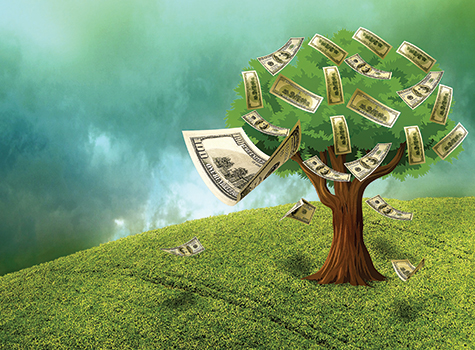By Ketu Desai

As we enter the new year, we are entering a new phase of this cycle. For much of the past two years, the Fed has been raising rates, inflation was at high levels, and growth was uneven and volatile. In many ways, the past couple of years have been part of the normalization process from the excess of pandemic policy. In 2024, the Fed will likely cut rates, inflation will hit the Fed’s target of 2 percent and growth will be steady. The normalization of the economy will provide businesses with more clarity. Many businesses have been frozen, waiting to see how rates and the economy evolve. Rate cuts will be a huge weight that is removed.
The housing market will lead the thawing, as rates are cut. Redfin said that in the final weeks of the year, they saw a double-digit increase in homeowners contacting agents. The latest housing starts data surged 14.8 percent, well above forecasts. It is likely with more clarity and lower rates a new capex cycle begins. The IPO market was down 33 percent in 2023. This year will likely see over 200 IPOs, bringing us back to pre-pandemic levels. Deal volume, down a quarter in 2023, is likely to pick up in 2024 as clarity promotes more risk-taking. Just in the final weeks of 2023, we saw a $14.1bn deal for US Steel, a potential to take DocuSign private, a hostile bid for Wyndham, a $5.8bn bid for Macy’s, Honeywell buying a Carrier unit for $5bn, a takeover bid for Neiman Marcus, a $10bn deal from AbbVie, Bristol-Myers made two acquisitions including one $14bn biotech acquisition, and Occidental buying CrownRock.
There will be plenty of capital looking for deals. Corporations have approximately $4 trillion in cash on their balance sheets. Banks are likely to lend more in 2024, as there is less pressure on their balance sheets. There is nearly $2 trillion in private credit that is looking to be deployed. Private equity has another $2.6 trillion in dry powder. There is $6.1 trillion in money market funds. As rates are cut and reset lower on money market assets, much of that capital will look for a new home. Equities will be among the beneficiaries of these flows. Despite a strong year in equity markets, 2023 saw more than a $200bn outflow.
The government has nearly $2 trillion from the Inflation Reduction Act and Infrastructure bill that will continue to be put to work. In short, the Fed cutting rates is like a massive weight that is taken off businesses and markets. With this weight taken off, available capital that amounts to more than 80 percent of GDP will unleash suppressed business activity.
The key remains inflation that moves toward 2 percent. This will allow the Fed to cut rates. This cycle is unique, it is an inflation cycle, not a traditional business cycle that most are basing their analysis on. In traditional cycles, rate cuts happen because something bad is happening. In this cycle, rate cuts will happen because something good is happening. As inflation is coming down and Fed Funds remain the same, the real rate starts to become onerous. The Fed will cut rates to prevent real rates from becoming onerous and to move the policy rate closer to its estimation of neutral.
AI was the major investment theme in 2023. It is likely going to be the next mega-cycle for investors for years to come. The first and second waves played out in 2023. Investors rewarded infrastructure, hyper-scalers, and software. The largest gainers in the S&P in 2023 were related to AI. Names such as Nvidia, Meta, Adobe, ServiceNow, Palo Alto Networks, Microsoft, AMD led the way. The next wave is likely to play out in 2024. In this wave, the larger gains will come from the consumers of technology, relative to the producers of technology.
At the intersection of normalization, rate cuts, and technology are small caps. With AI and technology, small caps will be able to punch significantly above their weight. Goldman estimates GAI will lift productivity by 1.5 percent, driving margins by 4 percent. Small caps were disproportionately penalized during the hiking cycle and will disproportionately benefit as we ease. Small caps had their largest underperformance relative to large caps since 1998.
In 1999 and 2000, small caps outperformed large caps by more than 15 percent each year. The relative price/earnings ratio of the Russell 2000 (IWM) compared with the S&P 500 has reached the lowest level since the dot-com era. Not only can you buy the Russell at a 40 percent discount to the S&P, but the Russell is also expected to have 29.3 percent earnings growth next year, compared to 11.5 percent for the S&P. Investors that have missed the move this year will look to beaten up areas such as small caps to catch up. From a positioning standpoint, hedge funds are the least long, small caps in 3-years. The technicals also line up. IWM just moved above its upward sloping 50D and 200D moving average and prior resistance at 200. IWM is on the verge of a golden cross and looks to be breaking out from a two-year base.
Looking forward, the markets will focus on earnings, the economic data, the Fed, and start to focus on the election primaries.
Ketu Desai is the Principal of i-squared Wealth Management Inc. (www.isquaredwealth.com), an investment management firm based in New Jersey. [email protected]



